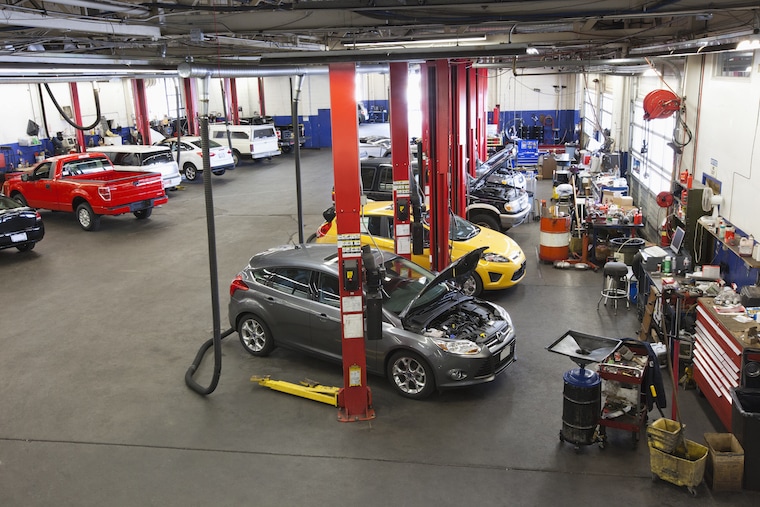Identifying the ideal locations for auto repair shop?
Looking to set up an auto repair shop? Whether you’re starting a new venture or expanding an existing one, choosing the right location is crucial to your success. In this guide, we’ll walk you through the essential factors to consider when scouting for the ideal spot for your auto repair business.

Demographic Analysis: Know Your Target Audience
Find the perfect spot for your auto repair shop by knowing your audience. Analyze the demographics of the location you’re eyeing to identify potential customers. Look for areas with a high number of vehicle owners that fit your target market. Pinpoint important factors like income, age, and ownership rates to better understand your potential clientele.
Proximity to High-Traffic Areas
Want to attract more customers to your auto repair shop? The secret is simple: visibility. By choosing a location near high-traffic areas like highways, intersections, and shopping centers, you can increase your chances of being seen by passing drivers. And the more visible you are, the more likely they are to choose you for their automotive needs. Don’t miss out on potential business – make sure your shop is easily accessible and visible to all.
Competition Analysis: Stand Out from the Crowd
Gain a competitive edge by analyzing your local competition! Evaluate the pricing, services, and customer reviews of nearby auto repair shops to find gaps in the market for your unique offerings. By standing out from your competition, loyal customers will be drawn to your business. Don’t miss out on this crucial step in building a successful client base.
Adequate Space and Infrastructure
Find the perfect spot for your auto repair shop by considering its space and infrastructure needs. Your chosen location should have enough room for all aspects of your business, like service areas, waiting rooms, and offices. Don’t forget to check for essential resources such as reliable electricity and water, as well as the proper zoning regulations.
Local Business Environment and Regulations
Before you choose a location for your auto repair shop, it’s important to get to know the local business environment and regulations. Be sure to research the licensing requirements, permits, and zoning regulations specific to auto repair shops in that area to avoid legal complications and ensure a smooth operation. Furthermore, take a look at the overall economic climate and business-friendly policies of the region to determine its potential for long-term growth.
Parking and Accessibility
Don’t let parking problems drive customers away from your auto repair shop. Choose a location that offers ample, easily accessible parking to ensure a seamless experience for your customers. With satisfied customers, you’ll boost your business and encourage repeat visits.
Local Networking and Partnerships
Maximize the potential of your auto repair shop by establishing a solid network of local partnerships. Look for strategic locations that offer chances for collaboration with other automotive businesses like car dealerships, towing services, or parts suppliers. These partnerships can effectively boost customer referrals and create more profit channels for your shop.
Future Expansion Possibilities
Plan ahead for your auto repair shop’s success by choosing a location with future growth in mind. Look for areas that offer room for expansion, like access to larger properties or the option to open additional locations. By considering long-term potential from the start, you’ll save time and stress down the road. Don’t let a lack of foresight hold your business back – find the perfect spot for your growing auto repair empire.
Conclusion
Selecting the perfect location for your auto repair shop is crucial to its success. Analyzing demographics, competition, infrastructure, and local regulations can reveal the ideal spot that matches your business objectives. Keep visibility, accessibility, and proximity to your intended audience top of mind. By weighing these vital factors, you can set your auto repair shop up for prosperity, drawing in a consistent flow of clients, and reaching sustainable profitability.
FAQ
A thriving auto repair shop starts with picking the perfect location. That means reviewing demographic data, checking out high-traffic zones, sizing up the competition, and assessing space, infrastructure, local business laws, parking, and accessibility. By taking all of these factors into account, you’ll be able to make a wise decision that puts your business on the path to success.
Demographics play a vital role in identifying the ideal location for your auto repair shop. Analyze factors such as population size, income levels, age groups, and vehicle ownership rates in the area you are considering. Targeting areas with a substantial population of vehicle owners who may require your services increases your chances of attracting a steady stream of customers.
Visibility is crucial for the success of your auto repair shop. Choosing a location close to high-traffic areas, major highways, or popular shopping centers increases the likelihood of attracting customers. Being easily accessible and visible to passing motorists creates brand awareness and encourages potential customers to choose your shop for their automotive needs.
To stand out from the competition, conduct a thorough analysis of existing auto repair shops in the area. Assess their services, pricing, and customer reviews. Identify gaps in the market that you can fill with unique offerings. Differentiating yourself through exceptional customer service, specialized services, competitive pricing, or convenient amenities will help you attract customers and build a loyal client base.
Understanding and complying with local regulations and zoning requirements is crucial when choosing a location for your auto repair shop. Research the licensing requirements, permits, and zoning regulations specific to auto repair shops in the desired area. Ensure that your business operations align with these regulations to avoid legal issues and ensure a smooth and compliant operation.

